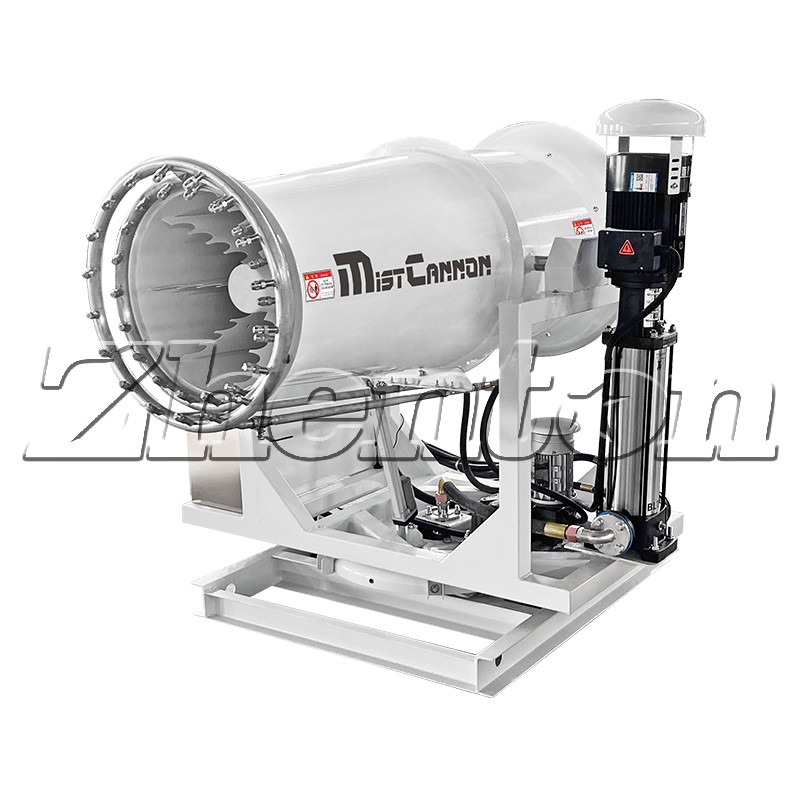
In the dual mission of urban construction and ecological protection, the dust control machine writes a new chapter in environmental governance with innovative technology. From construction site dust to road haze, industrial exhaust to odor pollution, this seemingly ordinary equipment is reshaping the purity of urban air with its hardcore strength as an “air purification artifact”.
Dust control machines adopt advanced high-pressure atomization technology to transform water into ultra-fine mist droplets of 20-80 microns. These droplets, similar in size to airborne dust and PM2.5, easily generate an adsorption effect. When mist droplets encounter pollutants, they rapidly agglomerate and settle to the ground due to increased weight. At a large construction site, activation of the dust control machine reduced PM10 concentration from 400μg/m³ to 80μg/m³ within 10 minutes, achieving an 80% dust suppression rate and curbing dust diffusion effectively.
Pollution scenarios vary across different environments, and dust control machines tackle them with strong coverage capabilities. Their spraying range reaches 30-120 meters, enabling effective coverage of large open-pit mines, busy arterial roads, and vast logistics parks. The equipment supports 360° horizontal rotation and -10° to +60° vertical adjustment for all-around, free (blind spot-free) spraying. Under urban overpasses, it suppresses dust from vehicle traffic by flexibly adjusting angles; at port terminals, multiple machines work in tandem to form a three-dimensional dust control network, safeguarding surrounding air quality.
New-generation dust control machines deeply integrate IoT and big data technologies, linking real-time with environmental monitoring equipment. When PM2.5/PM10 concentrations exceed standards, the machine starts automatically and adjusts spray volume, pressure, and duration based on data changes. Managers can remotely control the machine via mobile apps or a remote monitoring platform, checking parameters and dust suppression data for intelligent, refined management. In a smart construction project, this system reduced dust exceedance time by 75%, significantly improving efficiency.

Dust control machines far exceed traditional applications, with core dust suppression complemented by diverse functions. In sweltering summer, they serve as “urban coolers” to mitigate the urban heat island effect; during flu seasons, adding disinfectants enables large-area sterilization in public spaces; in odor-prone zones like wastewater treatment plants and landfills, machines with deodorants neutralize odor molecules. Additionally, their water-saving design reduces water use by over 60% compared to traditional sprinkling, achieving dual environmental and energy-saving benefits.

As public demands for ecological quality grow, dust control machines have become indispensable in environmental governance, thanks to their strong technical strength and wide-ranging applications. They not only free construction sites from “dust storms” and restore roads to “fresh cleanliness” but also help cities maintain their “blue sky and white clouds” ecological backdrop. From source pollution control to environmental quality improvement, dust control machines protect urban freshness with technological power—contributing wisdom and responsibility to building livable, green, and sustainable urban environments, and accelerating urban transformation on the path of green development.
Contact With Us
If you have any questions please fell free to contact with us.